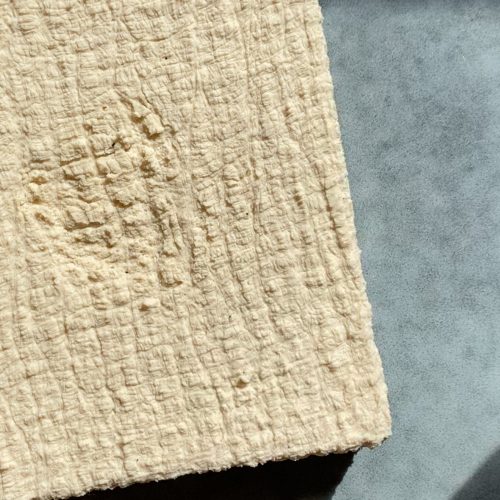
Tofu Recipe from Scratch
Homemade tofu is a fraction of the cost and is very customizable. Make firm, medium or even unpressed tofu like a ricotta style.
Equipment
- 1 Large pot
- Cheesecloth
- Tofu press (optional)
- Colander
Ingredients
- 2 cups soybeans
- 8 cups water
- 1 1/2 tsp nigari or coagulant of choice
Instructions
- Soak the soybeans in a large bowl and cover with a generous amount of cold water. Let soak for around 12 hours or until the beans have swelled up into an oblong shape rather than round.
- Drain the beans in a colander, rinse and pick out any dark or discoloured beans.
- Blend beans with 8 cups of water, before straining through a nut bag or cloth-lined colander. You'll need to do this in three to four batches to accommodate the standard blender size.
- Blend on high until the mixture forms a slurry. It should be milky and smooth with a fine grain left behind. If you over blend, your milk will be too sludge-like, but if you under blend, the milk will run too thin.
- Pour the soy milk slurry through a nut bag or muslin cloth-lined colander. Squeeze the bag to pour out every last drop. The remains are called okara and can be used as the base for many great recipes.
- Pour strained soymilk into a large pot over medium-low heat and simmer for a few minutes or until skin begins to form on top. It's essential to watch the pot and stir constantly because it boils over quickly.
- The bottom is also at high risk of burning.Bring the heat to a boil and pour one teaspoon of liquid nigari—lower the heat. The milk should begin to curdle. If it doesn't separate, add the remaining half teaspoon of nigari.
- Line a tofu press or colander with cheesecloth and slowly pour the tofu mixture over the sink.
- While still in the tofu press or colander, wrap the top of the tofu and place a weight over the mixture to press it down. A few cans work well here. The more your press your tofu, the firmer it becomes. If you prefer fresh tofu ricotta, skip this step.